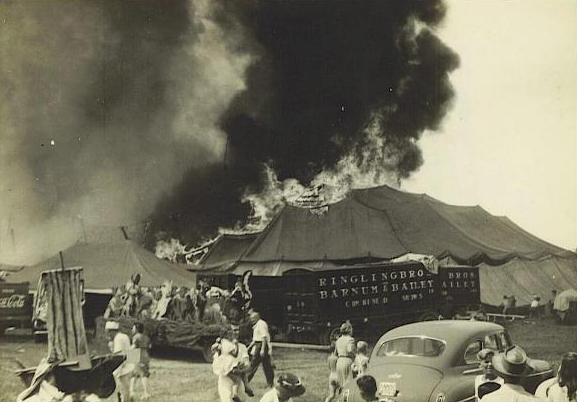
by Sam Porcello
In Hartford, there was just one private ambulance company at the time, Maple Hill, provided through the Talarski Funeral Home. (Many funeral homes including Ahern on Farmington Avenue provided ambulance services in the early 1900s, since hearses were large enough for people to lay down in). Penicillin was newly available, and approximately 85% of the world’s supply was being used in the war to treat infections, including pilots’ burns.
There were several factors that contributed to the Hartford Circus Fire. Small circus fires were actually pretty common in 1944, because more than 41% of Americans smoked. Safety codes at the time applied mostly to buildings. Since tents were “just” temporary structures, they did not generate a lot of attention. Requirements for detailed safety inspections, exit widths and having fire equipment onsite did not exist for outdoor events. With resources depleted from the war, manpower was scarce, so there were fewer Ringling employees watching inside the tent for fires.
The tent itself was waterproofed with a highly flammable mixture of paraffin and 6,000 gallons of gasoline, which accelerated the spread of the fire. From the time the fire started until the tent was completely burned away, a total of 10 minutes elapsed. A total of 168 people died, and another 484 were injured….(more to come, check back for future volumes).
